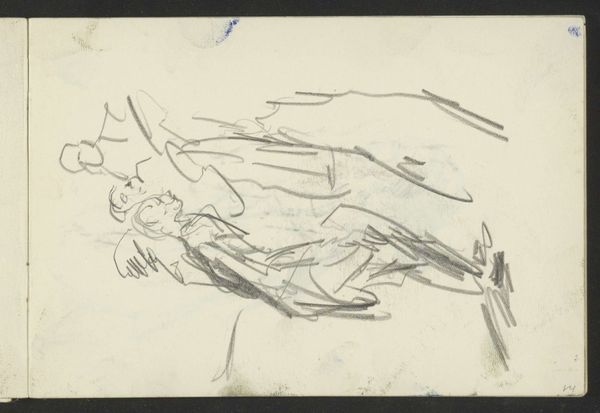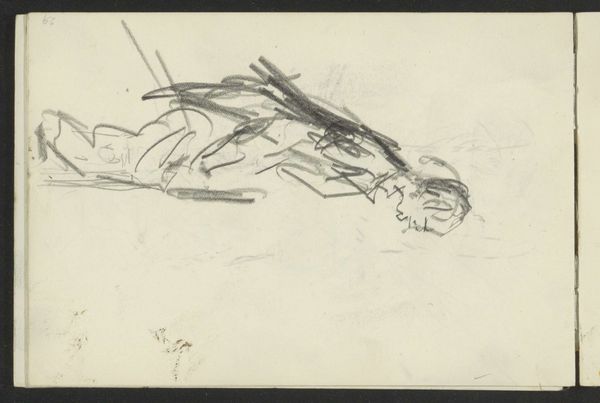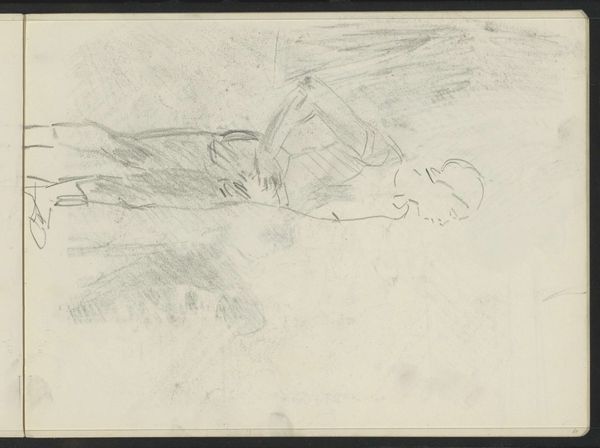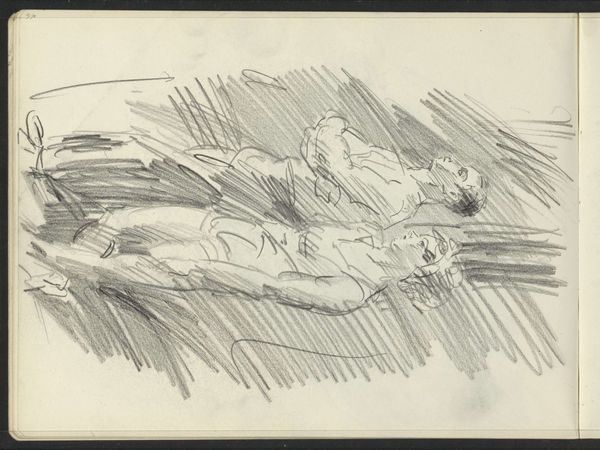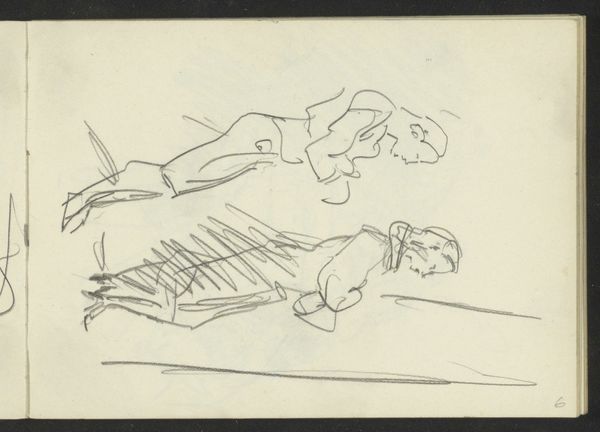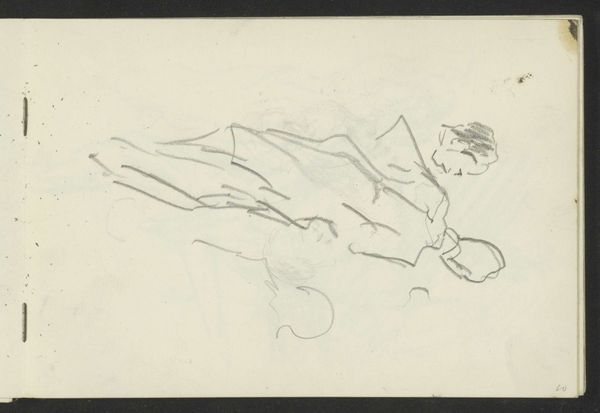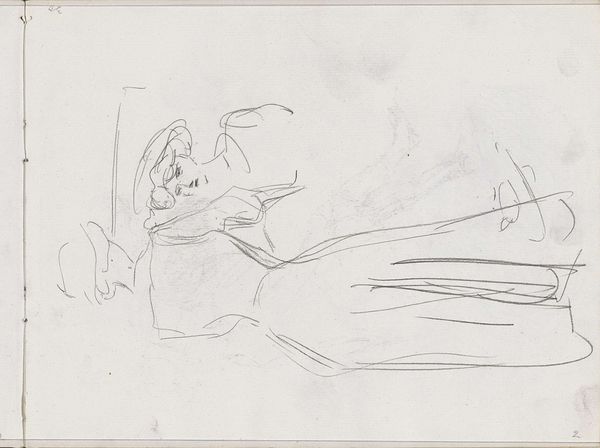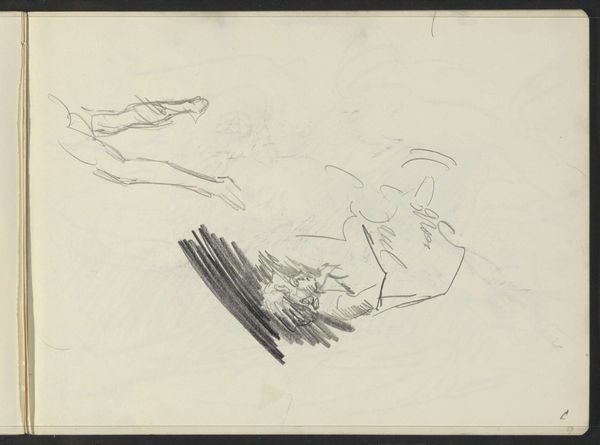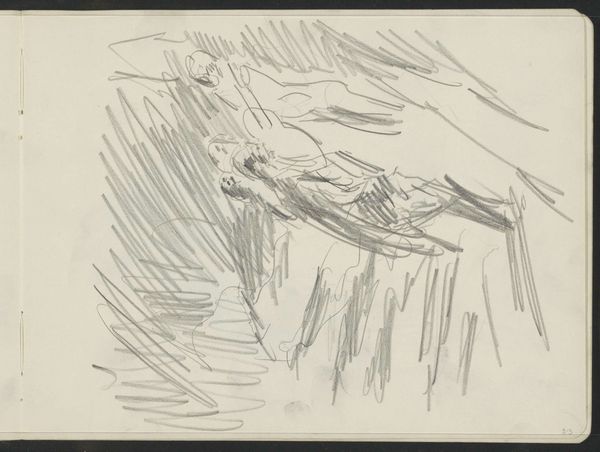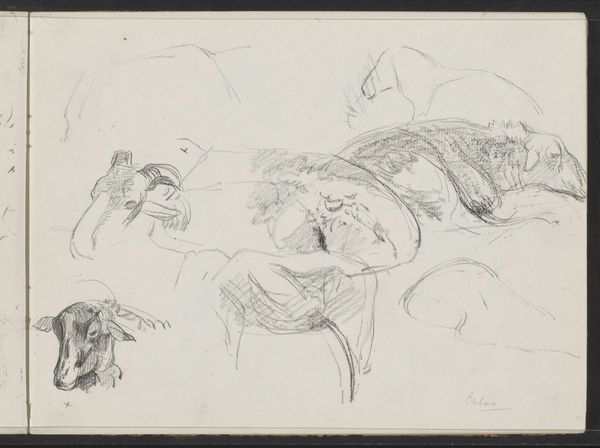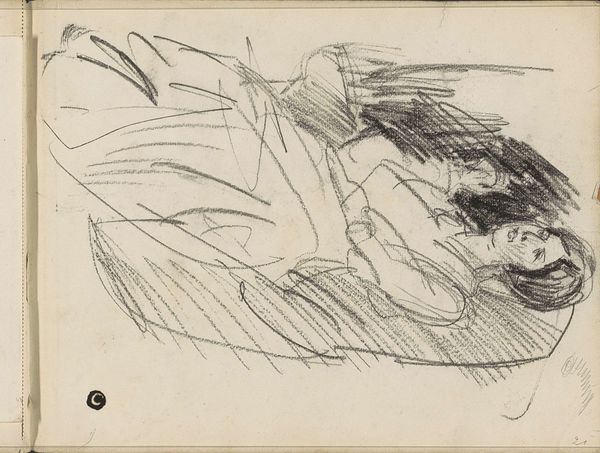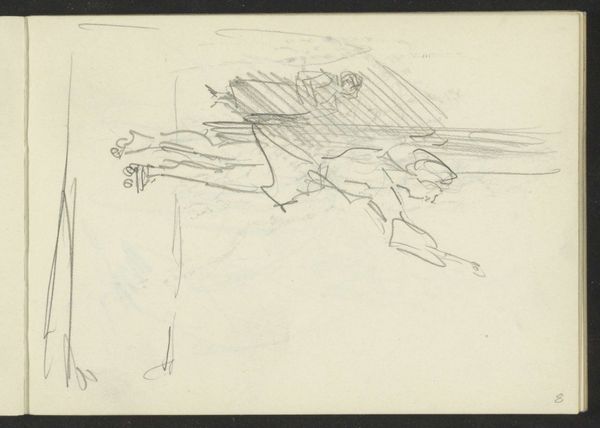
Copyright: Rijks Museum: Open Domain
Curator: This is a pencil drawing by Isaac Israels titled "Standing Figures, possibly artists" created sometime between 1875 and 1934. You can see it here at the Rijksmuseum. Editor: Oh, it's all scribble-scrabble at first glance! Makes me think of backstage chaos. Quick costume sketches maybe, trying to capture a gesture before it vanishes? Curator: That’s a keen observation! Israels had a way of capturing fleeting moments. These were, more often than not, observations of theatrical and fashion milieu, rather than staged events. Notice how the light and shadow play across the figures even in this simple sketch? Editor: Right! I see that light you mean—it’s concentrated, almost blinding, on one side, casting long, gestural strokes elsewhere that fade out to create implied shapes and mass. So atmospheric for such minimal effort, right? It feels very contemporary. Like, if you took this out of its frame and pretended it was by some street artist now... Curator: Yes! And that spontaneity and focus on everyday life resonated with the public. It reflected an aesthetic shift that Impressionism brought, which rejected idealized figures in art—often by focusing on contemporary themes. You find this tendency particularly noticeable in places like Parisian theatre where art critics, intellectuals, and wealthy sponsors are rubbing shoulders. Editor: So the figures—presumably actors or maybe musicians—aren’t polished, finished beings here. Israels is more concerned with that backstage flurry, the feeling of anticipation right before the spotlight hits. It is raw. I find myself thinking about Degas as I examine the bold lines with my gaze directed towards the centre, and the rest dissolving as it nears the edges. Curator: Exactly. Think about how new modes of urban entertainment contributed to that dynamic experience: bustling dance halls, bustling theatre lobbies—each filled with striking subjects for paintings or sketches in motion. This aesthetic aligned with the broader turn towards urban themes—that shaped much late 19th and early 20th-century modernism! Editor: I’m walking away seeing how this is more than just a quick sketch, or study: it captures a specific time—a time in-between acts when reality transforms under the magical stage glow—that Israels captures. A special behind the scene narrative. Curator: I concur. Israels had an incredible talent to seize a moment of transition from life to theatre, and it still feels potent even now.
Comments
No comments
Be the first to comment and join the conversation on the ultimate creative platform.
